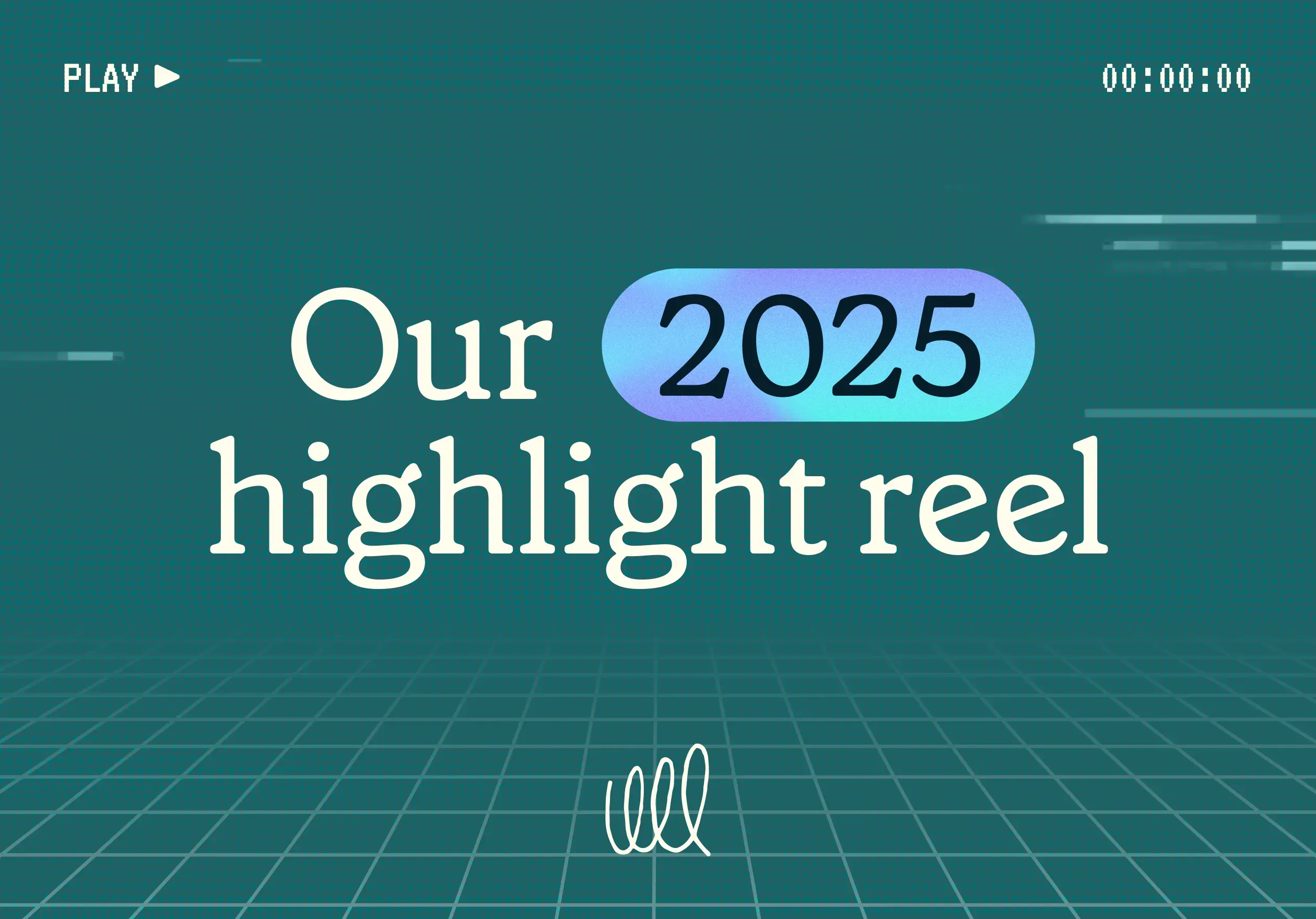16 Sep 2025
|24 min
Generative UX research
Learn what generative UX research is, why it matters, and how it helps create user-centered products by uncovering deep insights early in the design process.

Generative UX research helps teams discover what users actually need before building the wrong product. Unlike traditional research methods that test existing solutions, generative research explores unmet user needs, behaviors, and motivations before any design work begins.
Take Airbnb, for example. Research revealed that users wanted authentic, local experiences and a sense of belonging – not just accommodation. This insight led to their "Belong Anywhere" brand positioning and Superhost program, redefining their entire approach to travel.
This guide explores what generative research is, why it's crucial for product success, and how to implement it effectively. You'll learn proven methodologies and practical frameworks that leading companies use to create products that truly connect with users.
Key takeaways
What it is: Generative research explores user needs and behaviors before designing solutions, forming the foundation of user-centered products.
Why it matters: Reduces development risks, uncovers innovation opportunities, and aligns teams around real user needs instead of assumptions.
How to succeed: Plan structured studies, recruit the right participants, and systematically analyze findings to create actionable insights.
Business impact: Drives competitive advantages and breakthrough innovations that solve problems users didn't know they had.
Getting started: Begin with small studies to build skills, then scale using proven frameworks and tools like Lyssna.
Discover user needs
Ready to uncover what users actually want? Start exploring with Lyssna's 690,000+ participant panel.
What is generative UX research?
Generative UX research is an exploratory approach aimed at uncovering deep insights into users' needs, behaviors, and motivations before any design work begins. Unlike evaluative research, which focuses on testing existing products, generative research is all about discovery – digging into the "why" behind user actions and uncovering hidden problems or opportunities that aren't immediately obvious.
This process forms the basis of user-centered design, offering the raw insights needed to inspire innovation and guide the creation of products that truly connect with users.
Key characteristics of generative research
Generative research has several defining features that set it apart from other research approaches:
Exploratory nature: It asks open-ended questions without predetermined hypotheses.
Early-stage focus: Conducted before design decisions are made.
Qualitative insights: Emphasizes understanding the "why" behind user behaviors.
Problem identification: Helps define what problems need solving, not just how to solve them.
Innovation catalyst: Generates new ideas and opportunities for product development.
Generative research is especially valuable in the early phases of product development. It helps you grasp the broader context of users' lives, tapping into their lived experiences to generate new ideas, spot unmet needs, and steer the development of solutions that align with what users actually want and need.

Difference between generative and evaluative research
Understanding the difference between generative and evaluative research is important so that you can use the right method at the right time in your product development process.
Aspect | Generative Research | Evaluative Research |
|---|---|---|
Purpose | Explore and discover user needs | Test and validate existing solutions |
Timing | Early in design process | After concepts/prototypes exist |
Questions asked | "What problems exist?" "Why do users behave this way?" | "How well does our solution work?" "Does this meet user needs?" |
Approach | Open-ended exploration | Hypothesis-driven testing |
Methods | Interviews, ethnography, diary studies | Usability testing, A/B testing, surveys |
Outcomes | New insights, opportunities, ideas | Validation, refinement, optimization |
Generative research: The discovery phase
Generative research is exploratory and future-focused, aiming to generate new knowledge and ideas. It's conducted when you need to understand the problem space before designing solutions. This type of research doesn't start with assumptions – instead, it asks fundamental questions about user needs, behaviors, and motivations.
The goal is to uncover unmet needs, identify innovation opportunities, and make sure that any product development is grounded in real user insights rather than internal assumptions.
Evaluative research: The validation phase
Evaluative research, in contrast, is analytical and present-focused. It's used to test and validate existing designs, prototypes, or products. This research helps determine whether solutions work effectively for users and identifies areas for improvement before launch.
Both approaches are vital in a well-rounded UX research strategy, working together like two sides of the same coin – one helps you identify the right problems to solve, while the other ensures you're building the right solutions.

Why is generative UX research important?
Generative UX research digs deep into the motivations, behaviors, and needs of users, going beyond surface-level understanding to influence the success of a product. Here's why generative research matters so much for product success.
Uncovers unmet user needs and opportunities
Generative research reveals your target audience's unmet needs that existing products don't address. By engaging users in open-ended discussions and observing their real-world interactions, you can spot market gaps and opportunities that competitors have missed.
Key benefits:
Identify problems users didn't know they had.
Discover workarounds and pain points in current solutions.
Uncover new market opportunities.
Find gaps between what users say and what they actually do.
Reduces product development risks
By conducting generative research early in the design and development process, you significantly reduce the risk of building products that nobody wants or needs. Understanding users' genuine needs and behaviors helps teams make informed decisions and avoid costly mistakes.
Risk mitigation advantages:
Validate market demand before investing in development.
Avoid feature bloat by understanding what users truly need.
Prevent costly pivots by getting direction right from the start.
Reduce development waste through early problem identification.
Consider this: it costs more to fix a problem after a product launches than to address it during the research phase. Generative research acts as an early warning system, catching issues before they become expensive problems.
Drives innovation and competitive advantage
Generative research acts as a springboard for innovation by examining the broader context of users' lives and their interactions with existing products. This approach pushes teams to think beyond the status quo and consider fresh, innovative solutions that better align with user needs.
Innovation catalyst effects:
Breakthrough insights that lead to category-defining products.
Competitive differentiation through unique user understanding.
Opportunities in unexplored market spaces.
Disruptive solutions that change how users approach problems.
Creates user empathy and alignment
Engaging in generative research fosters deep empathy toward your users across your entire organization. It allows teams to immerse themselves in user experiences and understand their perspectives more deeply. This empathy is important for creating products that effectively address users' needs.
Alignment benefits:
Shared user understanding across teams and departments.
Reduced internal debates based on opinions rather than data.
User-centered decision making at all levels.
Stakeholder buy-in through compelling user stories.
When teams have direct exposure to user insights through generative research, they're more likely to advocate for user needs throughout the development process, leading to better outcomes for both users and the business.

How to conduct generative UX research: Step-by-step guide
Conducting effective generative research requires a structured approach that balances thorough planning with flexibility for discovery. Here's your step-by-step guide to running successful generative research studies.
Define research objectives and scope
Before diving into any research activities, clearly define what you want to learn and why it matters to your product strategy.
Setting clear objectives:
Identify the business questions you need to answer.
Define success criteria for your research outcomes.
Align with stakeholders on priorities and expectations.
Set realistic scope based on available resources and timeline.
Example research objectives:
Understand how remote workers manage their daily productivity challenges.
Explore unmet needs in the personal finance management space.
Identify pain points in the current customer onboarding experience.
Discover opportunities for innovation in health and wellness apps.
Scope considerations:
Timeline: How much time do you have for research and analysis?
Budget: What resources are available for recruitment, incentives, and tools?
Team capacity: Who will conduct, analyze, and synthesize the research?
Stakeholder expectations: What level of detail and confidence do decision-makers need?
Choose your approach and recruit participants
Selecting the right combination of generative UX research methods and participants is crucial for gathering meaningful insights that answer your research questions.
Method selection framework:
Research Goal | Recommended Methods | Participant Requirements |
|---|---|---|
Understand daily behaviors | Diary studies, ethnographic studies | Representative users willing to document activities |
Explore attitudes and motivations | In-depth interviews, focus groups | Diverse perspectives across user segments |
Discover unmet needs | Contextual inquiry, field studies | Users in their natural environment |
Generate new ideas | Co-creation workshops, cultural probes | Creative, engaged participants |
Recruitment best practices:
Define your ideal participant profile based on demographics, behaviors, and attitudes.
Recruit for diversity to capture a broad range of perspectives.
Screen carefully to ensure participants match your target audience.
Plan for over-recruitment (typically 20% more than needed) to account for no-shows.
With Lyssna's extensive research panel of over 690,000+ participants, you can quickly find and recruit users who truly represent your target audience using advanced filtering options based on diverse demographic and psychographic criteria.

Conduct research with best practices
The quality of your generative research depends heavily on how you conduct your sessions. Following proven best practices ensures you gather rich, unbiased insights – whether you’re conducting moderated or unmoderated research.
Essential best practices:
Create a comfortable environment:
Choose neutral, familiar settings for participants.
Build rapport before diving into research questions.
Make sure participants feel heard and valued.
Ask open-ended questions:
Start with broad questions and gradually narrow focus.
Use "tell me about..." and "walk me through..." prompts.
Avoid leading questions that bias responses.
Listen more than you talk:
Follow the 80/20 rule: participants talk 80% of the time.
Use silence strategically to encourage deeper sharing.
Ask follow-up questions to understand the "why."
Observe behavior, not just words:
Pay attention to body language and emotional reactions.
Note contradictions between stated preferences and actions.
Document environmental factors that influence behavior.
Sample question progression:
Opening: "Tell me about a typical day in your life."
Contextual: "When you encounter [problem area], what usually happens?"
Emotional: "How does that make you feel? What's frustrating about it?"
Behavioral: "Can you show me how you currently handle this?"
Aspirational: "If you had a magic wand, how would you solve this?"
For more user interview question suggestions, check out our guide.
Analyze and synthesize findings
The analysis phase transforms raw research data into actionable insights that can guide product decisions. This is where the real value of generative research emerges.
Analysis process:
Immerse yourself in the data:
Review all recordings, notes, and artifacts immediately after collection.
Create detailed session summaries while memories are fresh.
Document initial observations and surprises.
Identify patterns and themes:
Look for recurring pain points, behaviors, and motivations across participants.
Note both commonalities and interesting outliers.
Group related insights into thematic clusters (this is known as thematic analysis).
Extract key insights:
Focus on insights that are surprising, actionable, or challenge assumptions.
Prioritize findings that directly relate to your research objectives.
Validate insights with evidence from multiple participants or sources.
Useful analysis frameworks:
Affinity diagramming: Group related insights to identify patterns.
Journey mapping: Understand user experiences over time.
Jobs-to-be-Done: Focus on what users are trying to accomplish.
Persona development: Create user archetypes based on research findings.
Lyssna's powerful analysis tools help streamline this process with features like automatic transcription, making it easier to identify patterns and themes quickly while maintaining the depth of qualitative insights.

Generative UX research best practices
Successful generative research requires balancing openness to discovery with methodological rigor. Here are the essential practices that separate effective research from wasted effort.
Stay genuinely curious
Approach each session as if you know nothing about the problem.
Resist the urge to validate existing assumptions.
Be prepared to discover that your initial hypotheses were wrong.
Embrace unexpected findings as learning opportunities.
Use mixed methods for comprehensive understanding
Combine different research approaches to triangulate insights.
Balance individual and group methods to capture diverse perspectives.
Layer quantitative data over qualitative insights when possible.
Use follow-up methods to validate initial findings.
Engage stakeholders throughout the process
Include cross-functional team members in research planning.
Invite stakeholders to observe sessions when appropriate.
Share interim findings to maintain engagement and buy-in.
Collaborate on insight synthesis and opportunity identification.

Common pitfalls
Leading participants toward predetermined answers
The problem: Asking questions that push users toward expected responses.
Example: "Don't you think this feature would be useful?" instead of "How do you currently handle this task?"
Solution: Use open-ended questions and neutral language that invites honest responses.
Focusing on features instead of problems
The problem: Asking what features users want instead of understanding their underlying needs.
Example: "Would you use a dark mode?" versus "Tell me about when and how you use this app"
Solution: Focus on user goals, contexts, and pain points before exploring potential solutions.
Insufficient sample diversity
The problem: Only recruiting from easy-to-reach populations or extreme users.
Example: Only interviewing power users who love your product.
Solution: Deliberately recruit across user segments, including edge cases and non-users.
Rushing to solutions during synthesis
The problem: Jumping to design ideas before fully understanding the insights.
Example: "Users mentioned search, so we need better search" without understanding why current search fails.
Solution: Spend adequate time in the problem space before moving to solutions.
Quality assurance checklist
Before concluding your generative research, make sure you've met these quality standards.
Research execution
Conducted enough sessions to reach insight saturation (typically 8-12 for most studies).
Recruited participants that represent your target audience diversity.
Asked open-ended questions that encouraged detailed responses.
Documented both verbal responses and behavioral observations.
Analysis rigor
Reviewed all data systematically, not just memorable quotes.
Identified patterns across multiple participants, not just interesting outliers.
Grounded insights in evidence from the research data.
Validated findings with team members who observed sessions.
Insight quality
Insights are specific and actionable, not vague generalizations.
Findings challenge or confirm assumptions with evidence.
Opportunities are clearly connected to user needs and business goals.
Recommendations are prioritized based on user impact and feasibility.

When not to use generative research
While generative research is powerful, it's not appropriate for every situation. Understanding its limitations helps you choose the right research approach for your specific needs and constraints.
Situations where other research methods are more suitable
When you need quick validation of specific design decisions
Better alternative: Evaluative methods like usability testing or A/B testing.
Why: Generative research takes time and may not directly answer tactical questions.
Example: Testing whether a new checkout flow reduces abandonment rates.
When you have very tight timelines or budgets
Better alternative: Analytics analysis, existing research review, or rapid surveys.
Why: Quality generative research requires adequate time for recruitment, sessions, and analysis.
Timeline reality: Plan for 4-6 weeks minimum for meaningful generative research.
When the problem space is already well understood
Better alternative: Evaluative research or solution testing.
Why: Resources are better spent on optimizing known solutions.
Example: Improving conversion rates on a well-established ecommerce flow.
When you need statistically significant data
Better alternative: Quantitative surveys, A/B tests, or analytics.
Why: Generative research typically involves smaller sample sizes focused on depth over breadth.
Use case: Measuring adoption rates or feature usage patterns.
Resource and organizational constraints
Limited stakeholder buy-in for user research
Challenge: Generative research requires organizational patience and trust in the process.
Alternative approach: Start with faster evaluative methods to build research credibility.
Long-term strategy: Use quick wins to demonstrate research value before proposing generative studies.
Lack of direct user access
Challenge: Generative research requires meaningful interaction with real users.
Alternative: Secondary research, competitive analysis, or proxy user research.
Consideration: Question whether you can build effective products without direct user contact.
Very early-stage concepts with no user validation
Timing consideration: Sometimes basic market validation is needed before deep generative research.
Hybrid approach: Start with broad discovery surveys, then follow up with deeper generative UX research methods.
Risk: Spending extensive resources researching problems that may not represent viable opportunities.
Making the right choice for your situation
Consider these factors when deciding whether to invest in generative research:
Factor | Generative Research Suitable | Alternative Recommended |
|---|---|---|
Problem understanding | Unclear, need discovery | Well-defined, need optimization |
Timeline | 4+ weeks available | Less than 3 week |
Budget | Adequate for quality recruitment | Limited resources |
Stakeholder support | Strong buy-in for discovery | Need quick, tactical answers |
User access | Can reach representative users | Limited user access |
Decision impact | Strategic product directions | Tactical design decisions |

Generative research examples: Real-world applications in UX design
Generative research has driven breakthrough innovations across industries by uncovering insights that weren't immediately obvious through other research methods. These real-world examples demonstrate the transformative power of deep user understanding.
Technology and digital products
Airbnb: Redefining travel through belonging
Airbnb's success wasn't built on better booking flows or cheaper accommodations – it was built on a fundamental insight about human needs discovered through generative research. Through ethnographic studies and in-depth interviews with both hosts and guests, they uncovered that travelers didn't just want a place to stay; they wanted authentic, local experiences and a sense of belonging wherever they went.
This insight led to:
The "Belong Anywhere" brand positioning that differentiated them from hotels.
The Superhost program that rewards hosts for creating memorable experiences.
Community features that connect travelers with locals.
Experience offerings beyond just accommodation.
Spotify: Understanding music discovery psychology
Rather than just asking users about their music preferences, Spotify's research team dove deep into the emotional and psychological aspects of music discovery. They found that listeners experienced a tension between comfort (familiar favorites) and curiosity (discovering new music), and that this balance was highly personal and context-dependent.
Key insights that shaped product development:
Users wanted algorithmic help but also serendipitous discovery.
Music mood varies significantly throughout the day and week.
Social validation plays a role in music exploration.
Personalization needs to evolve with changing taste.
This research directly informed features like Discover Weekly, Daily Mix, and Release Radar – all of which became central to Spotify's competitive advantage.
Physical products and services
Lego: From construction to storytelling
When Lego sales were declining in the early 2000s, the company conducted extensive research to understand how children actually played with their products. Through ethnographic studies in homes and schools, they discovered something surprising: children weren't just building structures – they were creating elaborate narratives and using Lego bricks as characters in complex stories.
This insight revolutionized their product strategy:
Development of themed sets that supported storytelling (Harry Potter, Star Wars).
Creation of Lego Friends line focused on narrative play.
Integration with media properties to extend stories beyond physical play.
Educational programs that emphasized creative storytelling skills
IDEO and Bank of America: Keep the Change
IDEO partnered with Bank of America to understand how people actually think about and manage money in their daily lives. Through research, they uncovered that people had complex emotional relationships with saving money – they wanted to save but found it difficult to prioritize against immediate needs.
The research revealed that people were naturally rounding up purchases in their mental accounting, leading to the "Keep the Change" program that automatically rounds up debit card purchases and saves the difference. This insight-driven innovation helped Bank of America acquire millions of new customers.
Healthcare and wellbeing
Philips Healthcare: Understanding patient experience
Philips conducted generative research in hospital settings to understand not just how medical equipment functioned, but how the entire experience affected patients, families, and healthcare providers. Through observation and interviews, they discovered that medical environments were often intimidating and stressful for patients, which could actually impact health outcomes.
Research insights led to:
Redesigned MRI machines with ambient lighting and nature sounds to reduce anxiety.
More intuitive interfaces that reduced training time for healthcare workers.
Family-friendly spaces that acknowledged the role of support systems in healing.
Equipment designed to maintain patient dignity during vulnerable moments.
Financial services innovation
Capital One: Understanding financial stress
Capital One's research team conducted extensive generative research to understand how people experience financial stress and make money decisions under pressure. Through in-home interviews, diary studies, and contextual inquiry, they discovered that financial anxiety often peaks during specific life events and that people develop complex workarounds to manage uncertainty.
Key findings influenced:
Proactive communication during difficult financial periods.
Tools that help customers understand spending patterns and trends.
Educational content delivered at teachable moments.
Product features that provide financial guardrails without judgment.
Lessons from successful applications
Common success factors:
Deep contextual understanding: Going beyond surface-level preferences to understand underlying motivations.
Cross-functional collaboration: Including diverse team members in research process and synthesis.
Patient investment: Allowing adequate time for discovery and insight development.
Strategic integration: Connecting research insights directly to business strategy and product roadmap.
Continuous iteration: Using insights to inform ongoing product evolution, not just initial development.
Impact measurement:
Market differentiation through unique user understanding.
Reduced development waste by focusing on real user needs.
Improved user satisfaction and engagement metrics.
Stronger competitive positioning based on authentic user insights.
Innovation opportunities that competitors miss.
These examples demonstrate that generative research isn't just about understanding what users want – it's about understanding why they want it, how it fits into their lives, and what opportunities exist to serve them better than anyone else.

Getting started with generative research
Ready to begin generative research? The key to success is starting with the right foundation and building your skills systematically. Here's your practical roadmap for implementing generative research in your organization.
Building your first study
Start small and focused
Choose one specific user group or problem area to explore.
Plan for 6-8 participant sessions for your first study.
Budget 3-4 weeks for the complete research cycle.
Focus on learning the process before tackling complex multi-method studies.
Essential preparation steps
Define your learning objectives clearly and specifically.
Create a research plan that outlines your approach and timeline.
Develop an interview guide with open-ended questions.
Set up your research tools and recording systems.
Practice your interviewing skills with colleagues or friends.
Your first study checklist
Research objectives written and shared with stakeholders.
Participant recruitment plan with screening criteria.
Interview guide reviewed by team members.
Recording and note-taking setup tested.
Analysis approach planned with adequate time allocated.

Leveraging Lyssna for streamlined research
Lyssna's comprehensive suite of research tools can significantly accelerate your generative research process and improve the quality of your insights.
Participant recruitment made easy
With Lyssna's research panel of over 690,000+ participants, you can:
Access diverse demographics and psychographic profiles.
Use advanced filtering to find your exact target audience.
Recruit participants quickly without the typical sourcing challenges.
Scale your research as you gain confidence and experience.
Research execution and analysis
Lyssna's platform supports your entire research workflow:
Integrated video calls for remote interviews and sessions.
Automatic transcription that saves hours of manual work.
Collaborative analysis tools for team-based insight synthesis.
Flexible survey capabilities for mixed-method approaches.
Getting the most from Lyssna
Start with surveys to gather broad feedback before diving into interviews.
Use the prototype testing features to validate findings from generative research.
Leverage the analysis tools to identify patterns across multiple research studies.
Take advantage of the flexible pricing plans to match your research budget and needs.
Building organizational support
Start with allies and early wins
Identify colleagues who are already user-focused and invite them to observe sessions.
Share compelling user quotes and stories that illustrate key insights.
Connect research findings directly to business metrics and outcomes.
Demonstrate research ROI by showing how insights prevent costly mistakes.
Scaling research practice
Train multiple team members in basic generative research skills.
Create research templates and guidelines for consistent quality.
Establish regular research rhythms rather than one-off studies.
Build a research repository to accumulate insights over time.
Measuring and communicating impact
Track how research insights influence product decisions.
Document successful innovations that originated from user research.
Share research findings in engaging formats (personas, journey maps, video highlights).
Connect research outcomes to business metrics (retention, satisfaction, revenue).
Developing your research skills
Core competencies to develop
Active listening and interview techniques.
Pattern recognition and synthesis skills.
Storytelling for insight communication.
Facilitation for workshops and collaborative sessions.
Learning resources and next steps
Practice interviewing with friends, family, and colleagues.
Attend UX research meetups and conferences in your area.
Read foundational books on qualitative research methods.
Join online communities where researchers share best practices.
Building expertise over time
Start with simpler methods (interviews, surveys) before attempting complex ethnographic studies.
Gradually increase study complexity and participant numbers.
Experiment with different analysis approaches to find what works best for your team.
Seek feedback from experienced researchers when possible.
Remember: generative research is a skill that improves with practice. The most important step is to start, learn from each study, and gradually build your expertise and organizational capability over time.
Start research today
Transform assumptions into insights. Launch your first generative study with Lyssna's complete research toolkit
FAQs about generative UX research
You may also like these articles


Try for free today
Join over 320,000+ marketers, designers, researchers, and product leaders who use Lyssna to make data-driven decisions.
No credit card required






